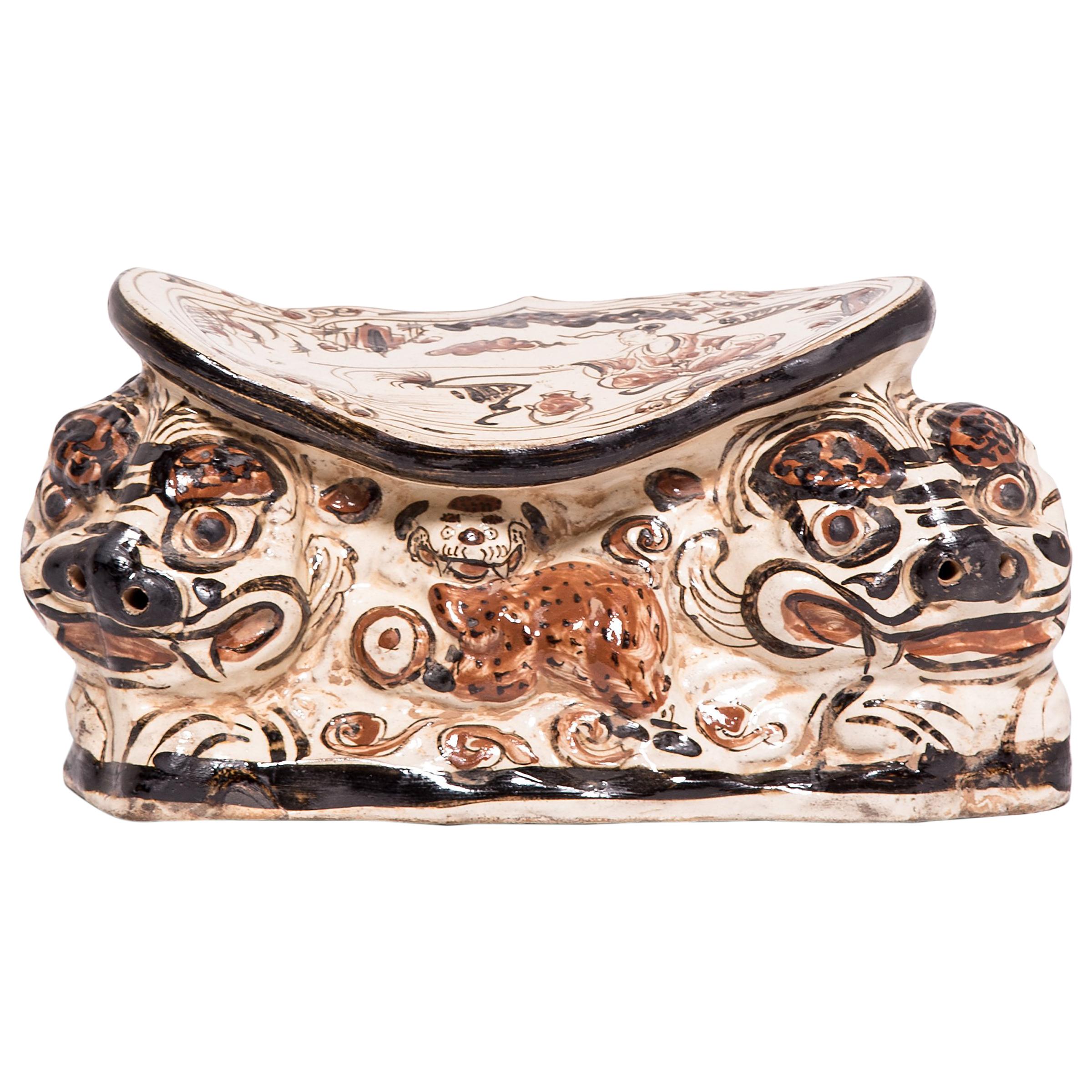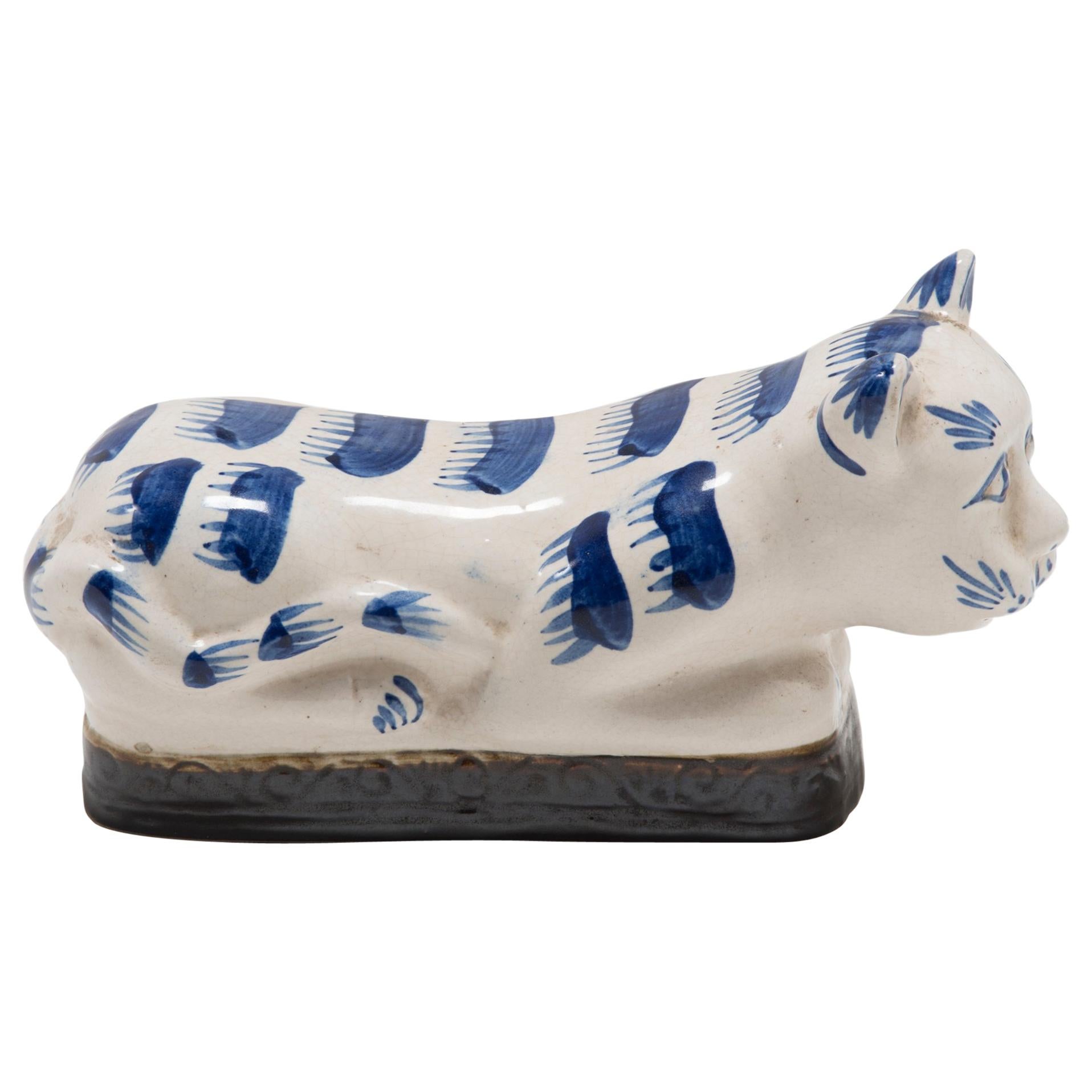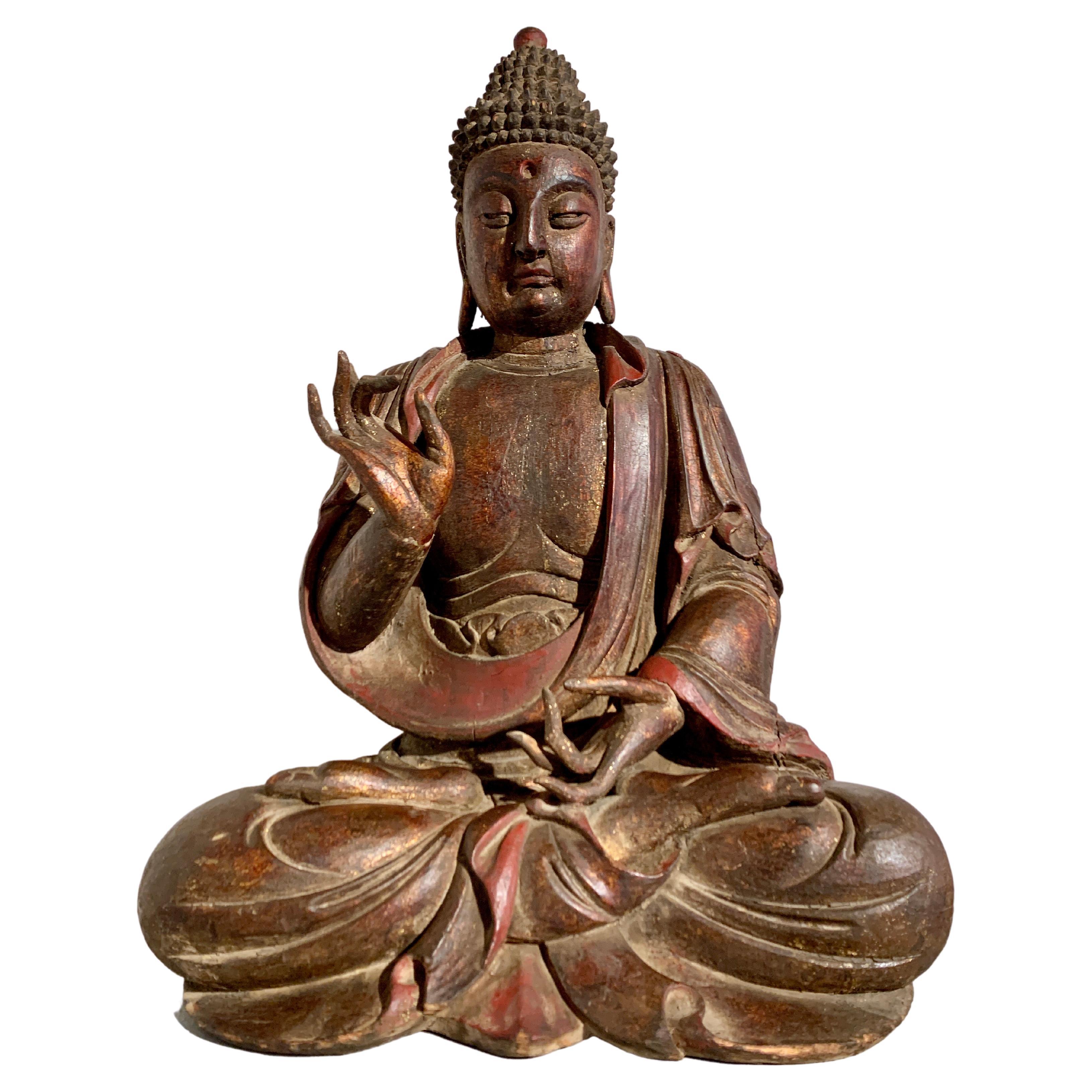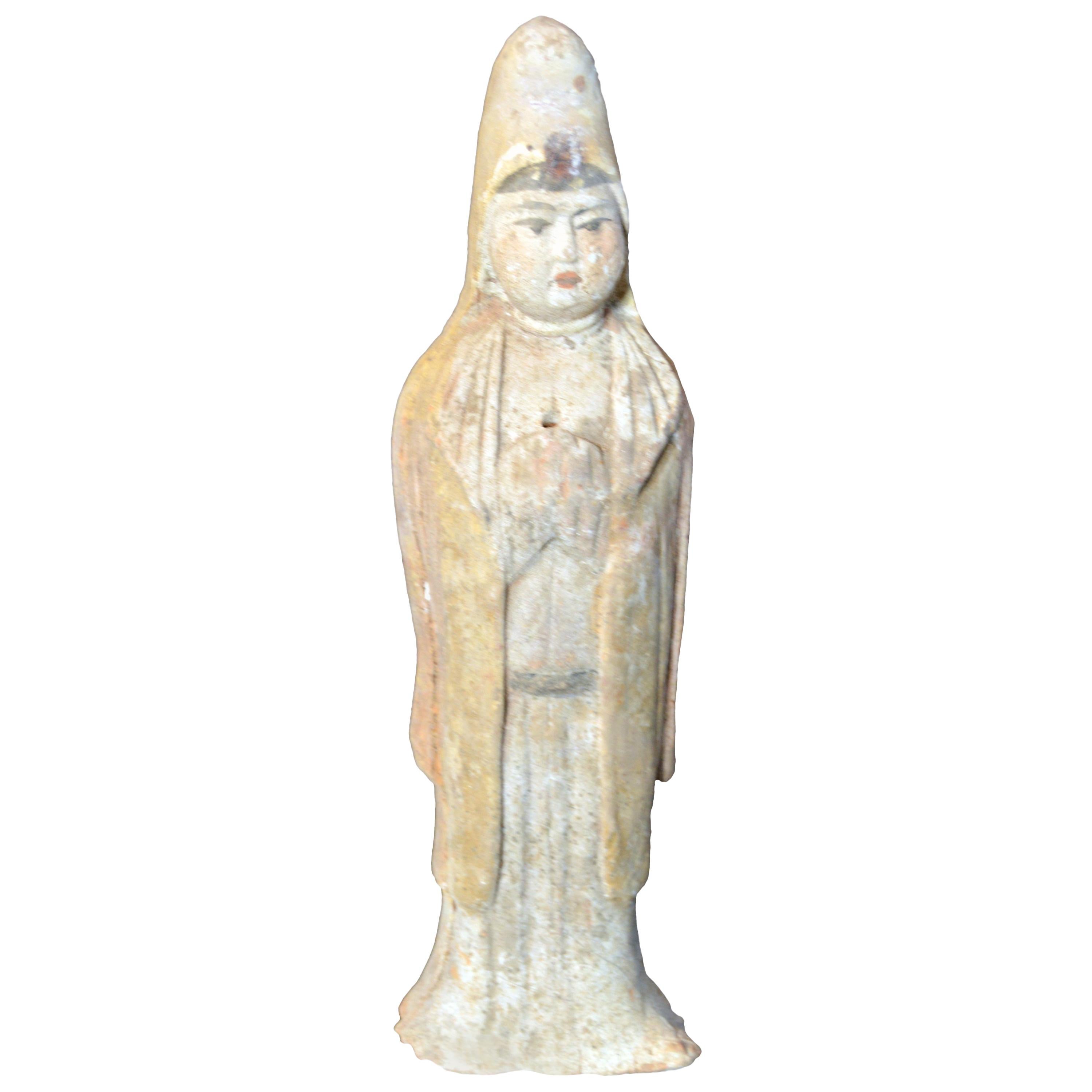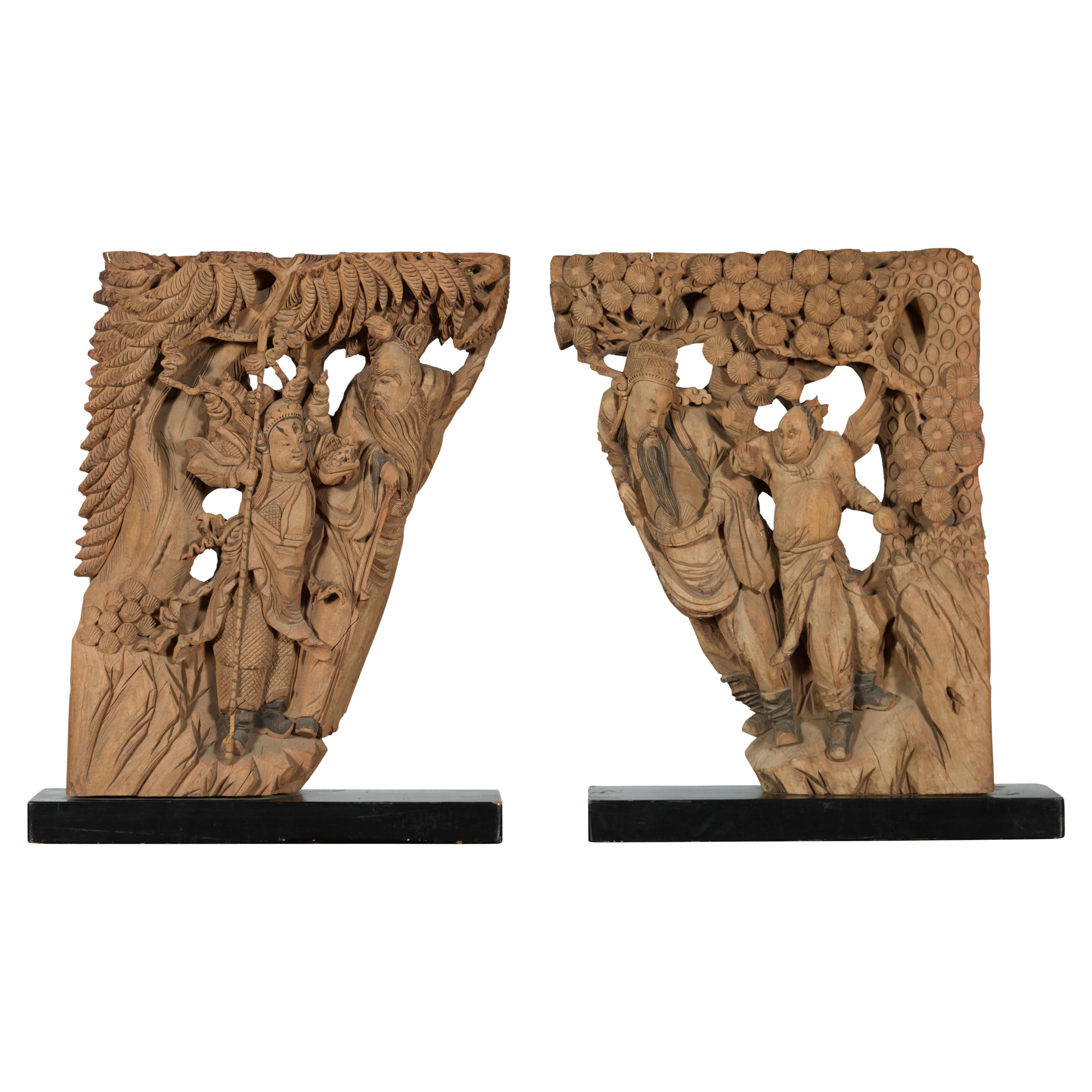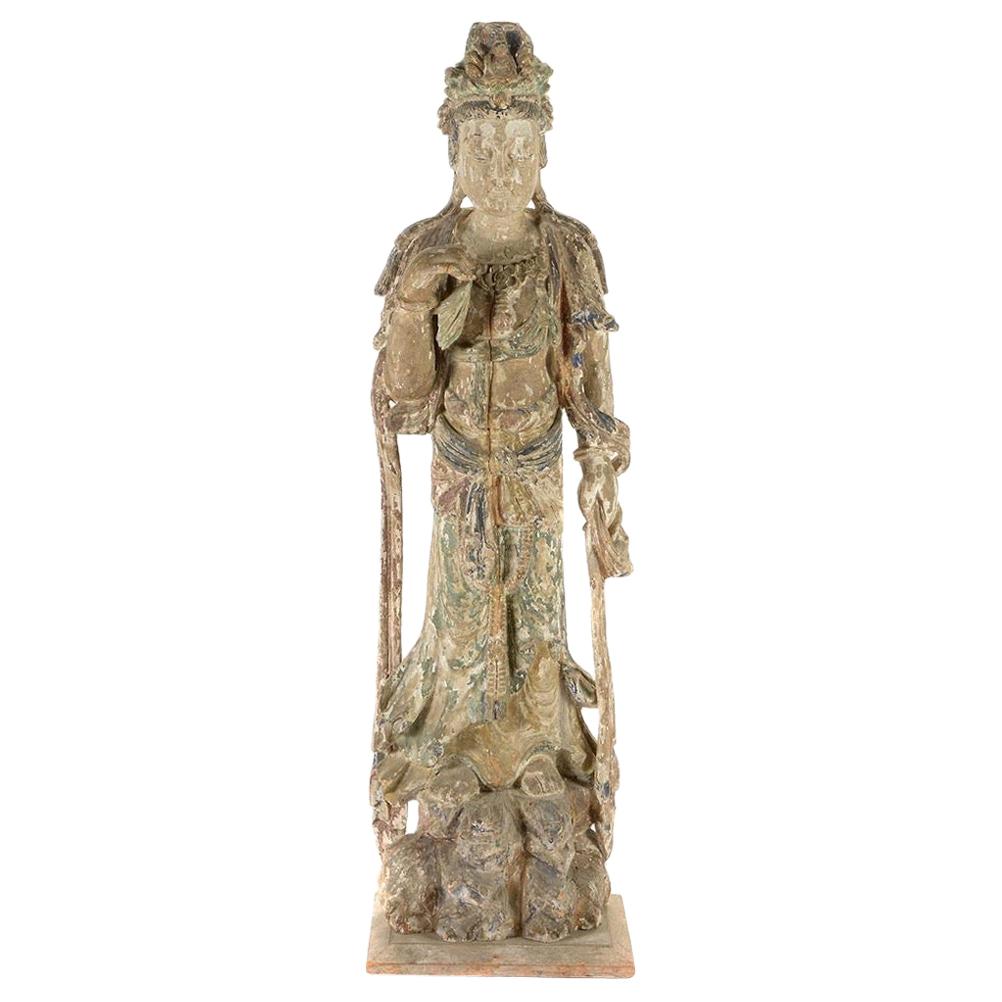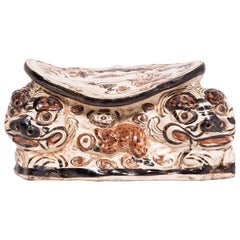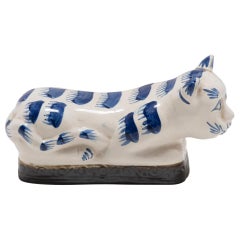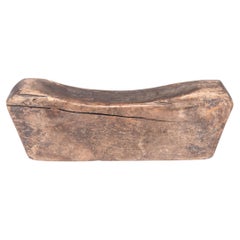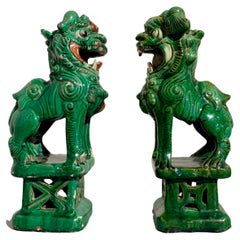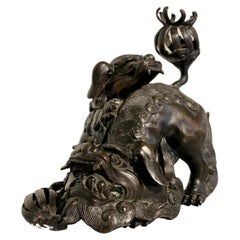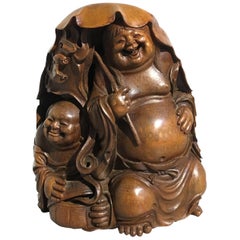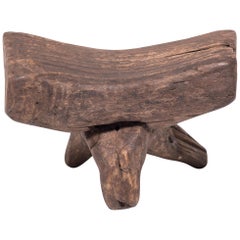
19th Century Provincial Chinese Headrest
View Similar Items
Want more images or videos?
Request additional images or videos from the seller
1 of 6
19th Century Provincial Chinese Headrest
About the Item
- Dimensions:Height: 8.5 in (21.59 cm)Width: 13.25 in (33.66 cm)Depth: 8.25 in (20.96 cm)
- Style:Qing (Of the Period)
- Materials and Techniques:
- Place of Origin:
- Period:
- Date of Manufacture:circa 1850
- Condition:Wear consistent with age and use.
- Seller Location:Chicago, IL
- Reference Number:Seller: BJFF1771stDibs: LU820014576231

About the Seller
4.9
PAGODA RED is a renowned resource for designers as well as collectors of contemporary and ancient Chinese, Korean and Japanese art. They offer a curated edit of fine and provincial furniture, ceramics, scholars' objects, and paintings and textiles, each piece historically and geographically authentic.
Diamond Seller
These expertly vetted sellers are 1stDibs' most experienced sellers and are rated highest by our customers.
Established in 1997
1stDibs seller since 2006
1,422 sales on 1stDibs
Typical response time: 1 hour
More From This SellerView All
- Chinese Double Guardian Headrest, circa 1900Located in Chicago, ILTo keep her elaborate hairstyle intact while sleeping, a well-to-do Qing-dynasty woman would use a rigid headrest or neck pillow to keep her head elevated. Whether functional or pure...Category
Antique Late 19th Century Chinese Qing Animal Sculptures
MaterialsPorcelain
- Chinese Blue and White Cat Headrest, c. 1900Located in Chicago, ILTo keep her elaborate hairstyle intact while sleeping, a well-to-do Qing-dynasty woman once used this ceramic headrest as a pillow. The headrest is shaped as a crouching house cat, w...Category
Antique Late 19th Century Chinese Qing Animal Sculptures
MaterialsCeramic
- Provincial Chinese Wooden Headrest, circa 1850Located in Chicago, ILMade of Chinese northern elmwood, this smooth block of wood was once used as a rigid headrest or neck pillow. The soft curve and height of the block not only supported the head while...Category
Antique Mid-19th Century Chinese Rustic Sculptures and Carvings
MaterialsElm
- 18th Century Chinese Guardian SculptureLocated in Chicago, ILThis ancient stone guardian lion shizi was carved by hand out of a single block of limestone. The artisan beckoned the guardian out from the stone, manipulating the unyielding materi...Category
Antique Early 18th Century Chinese Qing Sculptures and Carvings
MaterialsLimestone
- Pair of 19th Century Chinese Stone Fu DogsLocated in Chicago, ILThis pair of 19th century carved limestone Fu dogs with sinister smiles and furled brows once guarded the entrance to one of provincial China's grand homes. One peers up and the othe...Category
Antique Mid-19th Century Chinese Qing Sculptures and Carvings
MaterialsLimestone
$9,680 / set - 17th Century Chinese Ming Bronze Figure of a BoyLocated in Chicago, ILFine cast bronze figures created over 400 years ago during China's Ming dynasty are rare and highly appreciated. In this exceptional example, a spirited young boy stands on a lotus b...Category
Antique Early 17th Century Chinese Ming Sculptures and Carvings
MaterialsBronze
You May Also Like
- Chinese Green Glazed Foo Lions, Near Pair, Late 19th Century, ChinaLocated in Austin, TXA charming near pair of Chinese green glazed foo lion joss stick holders, late 19th century, China. The delightful foo lions, also referred to as foo dogs, crafted as joss (incens...Category
Antique Late 19th Century Chinese Qing Sculptures and Carvings
MaterialsStoneware
- Chinese Bronze Fighting Foo Lions Censer, Qing Dynasty, Late 19th Century, ChinaLocated in Austin, TXA fantastic Chinese cast bronze censer in the form of two Buddhistic lions play fighting, late Qing Dynasty, late 19th century, China. The censer formed as a pair of Buddhistic li...Category
Antique Early 1900s Chinese Qing Sculptures and Carvings
MaterialsBronze
- Chinese Qing Dynasty Carved Bamboo HeHe ErXian Group, 19th CenturyLocated in Austin, TXA wonderful Chinese bamboo figural carving featuring the Taoist immortal twins of eternal youth, known as the HeHe ErXian, Qing dynasty, 19th century. F...Category
Antique 19th Century Chinese Qing Sculptures and Carvings
MaterialsBamboo
- Large Chinese Carved and Lacquered Buddha, Qing Dynasty, 19th CenturyLocated in Austin, TXA large and magnificent near life-sized Chinese carved and lacquered wood figure of a Buddha, Qing Dynasty, 19th century or earlier, southern China. The figure likely represents one of the Five Tathagatas, also known as Dhyani Buddhas or Wisdom Buddhas. More specifically, either Amitabha or Amoghasiddhi. Amitabha is the Buddha of infinite light, and represents the wisdom of observation and recognition. Amoghasiddhi is the Buddha of accomplishment, and represents the wisdom of perfected practices. The size and scale of the Buddha indicates it was made for temple worship. The large Buddha is portrayed seated in vajrasana, or full lotus position, with the soles of both feet facing up. His elegant hands, with impossibly long and slender fingers, perform shuni mudra, the gesture of bestowing patience. His right arm is bent at the elbow, the right hand raised to heart level. The left arm resting gently in his lap, the left hand at navel level. The Buddha is dressed in voluminous robes that wrap around his shoulders and body, and tied at the waist. The heavy fabric draping and pooling elegantly all around his robust body. His broad chest and right arm exposed. The Buddha's face is both solemn and beatific - his expression seeming to change depending on the angle of view. The most notable feature of his face is the large urna to the center of his forehead, set between a pair of painted, high arching brows over heavily lidded almond shaped eyes. A strong nose is set above a small mouth pursed in an ever so slight smile. Long pendulous earlobes touch his shoulders. The Buddha's hair arranged in the typical fashion, with "spikes" representing tight curls. A prominent ushnisha rises from the crown of his head, covered by more hair, and topped with a rounded protuberance. The Buddha is constructed from several blocks of wood, joined, carved and lacquered a deep red-brown with gold flecks...Category
Antique 19th Century Chinese Qing Sculptures and Carvings
MaterialsWood
- 19th Century Chinese Bronze Dancing FigureLocated in Hudson, NYThe charming figure done completely in the lost wax method is in a primitive naive style. The male figure is dancing excitedly on a rocky outcrop. His costume of a loose-fitting coat...Category
Antique 19th Century Chinese Sculptures
MaterialsBronze
- Chinese Qing Dynasty 19th Century Small Hand-Painted Terracotta Priestess StatueLocated in Yonkers, NYA 19th century Chinese standing priestess sculpture made from terracotta during the later stages of the Qing dynasty with traces of original paint. This small hollow statue displays ...Category
Antique 19th Century Chinese Qing Sculptures and Carvings
MaterialsTerracotta
Recently Viewed
View AllMore Ways To Browse
Antique Rustic Bookcase
Midcentury Sculptural Bookcase
Chinese Headrest
Asymmetric Bookcase
Asymmetrical Bookcase
Rustic Carved Bookcase
Antique Chinese Headrest
Brazilian Quartz
America 15th Century
Seashell Shell
Stone Sphere
Stone Spheres
Stone Fish
Antique Polish Crystal
Used China And Crystal
Vintage Specimen
Sculptured Bed
Quartz Specimen
